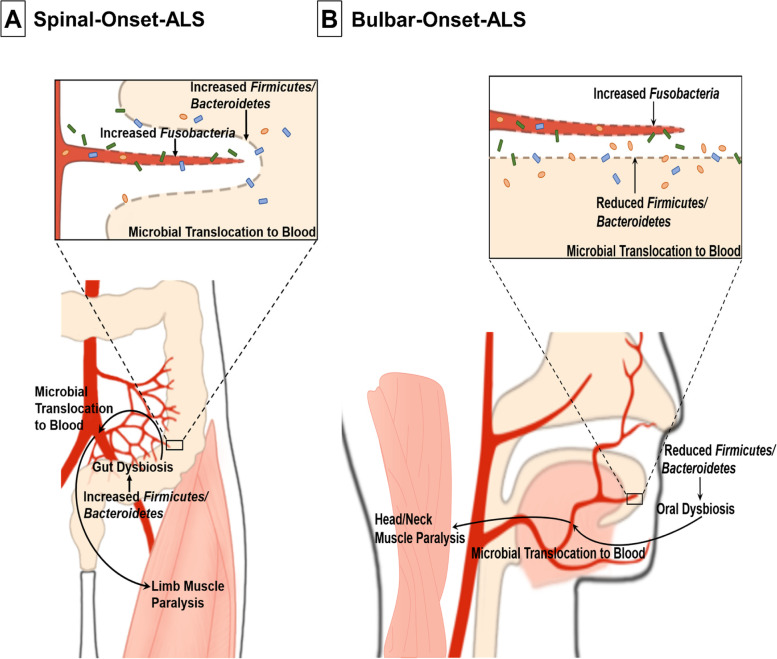Fig. 8.
Schematic Diagram of Proposed Mechanisms for Spinal- and Bulbar-Onset ALS Pathogenesis. A Proposed mechanism for the pathogenesis of spinal-onset ALS. A shift to higher gut Firmicutes/Bacteroidetes (F/B) ratio causes gut-dysbiosis. Gut-dysbiosis then weakens gut-barriers via local inflammation, enabling microbes to cross the mucosal barriers, translocate to local blood vessels/nerves supplying limb muscles first, and cause limb paralysis. Once high levels of Fusobacteria cross weakened gut-barriers thanks to gut-dysbiosis, they increase endothelial permeability to microbes, exacerbate local microbial translocation to the blood, and worsen spinal-onset ALS pathologies. B Proposed mechanism for the pathogenesis of bulbar-onset ALS. A shift to lower oral F/B ratio causes oral-dysbiosis. Oral-dysbiosis then weakens oral cavity barriers via local inflammation, enabling microbes to cross the mucosal barriers, translocate to local blood vessels/nerves supplying head and neck muscles first, and trigger their paralysis. Once high levels of Fusobacteria cross weakened oral cavity barriers thanks to oral-dysbiosis, they increase endothelial permeability to microbes, exacerbate local microbial translocation to the blood, and worsen bulbar-onset ALS pathologies

